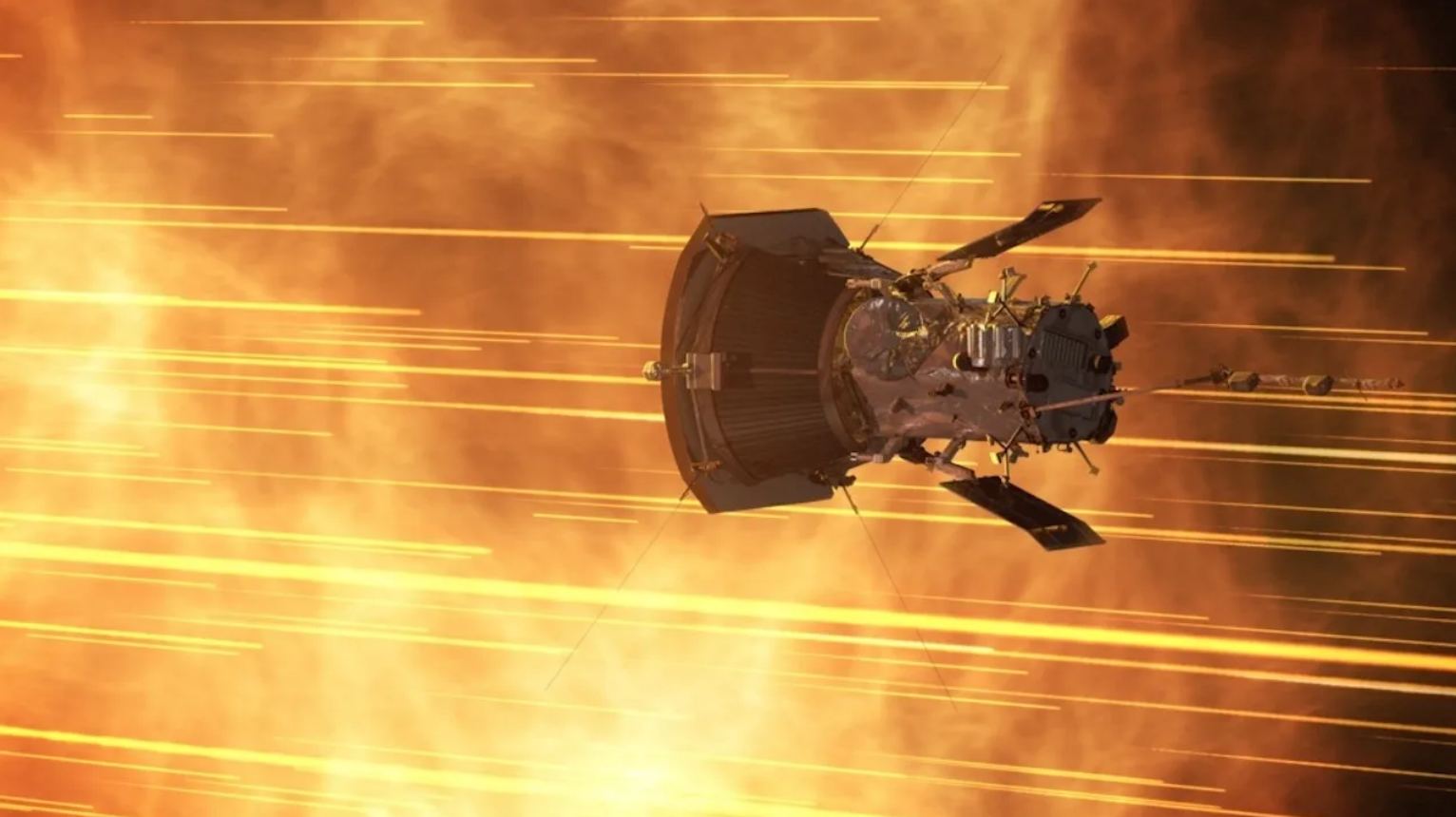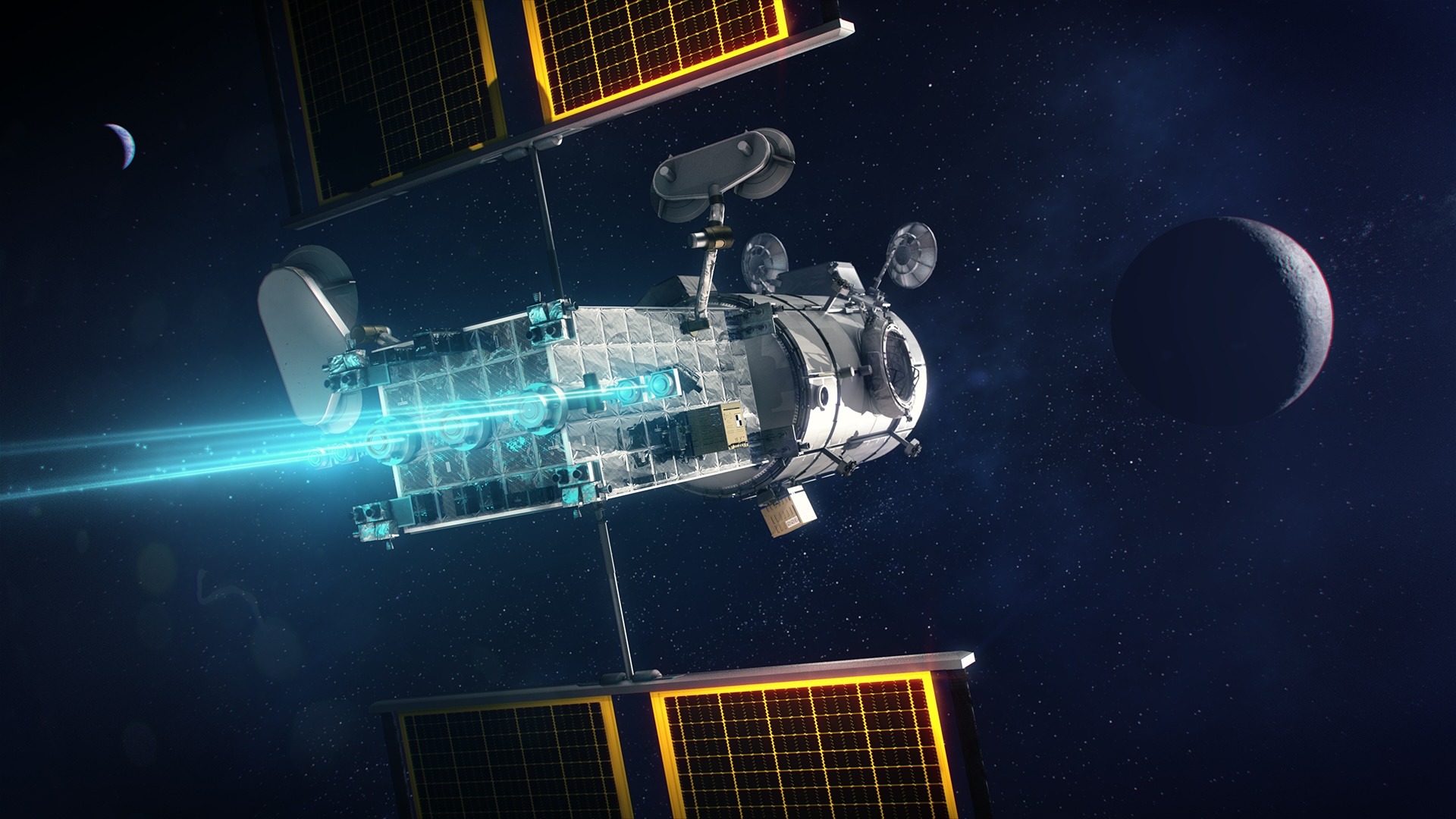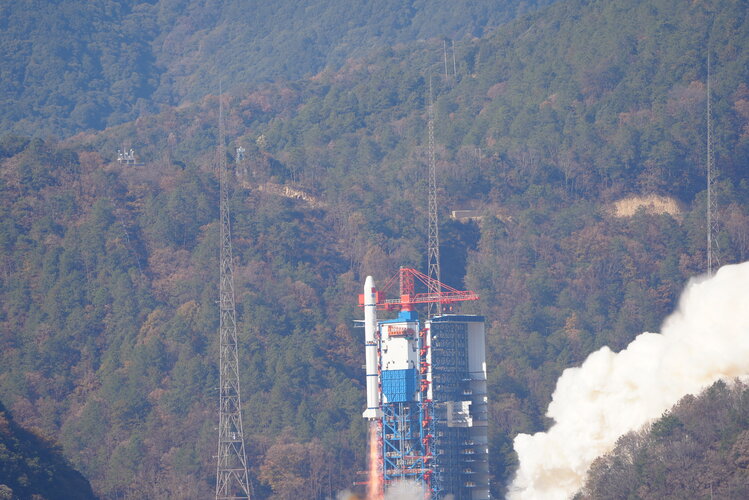The fasted object ever made by humans has completed another milestone. The Parker Solar Probe recently celebrated the new year by completing its 18th flyby of the Sun.
Continue reading “Parker Solar Probe Skims the Sun on its 18th Flyby”Planetesimals Are Buffeted by Wind in their Nebula, Throwing Debris into Space

Before planets form around a young star, the protosolar disk is populated with innumerable planetesimals. Over time, these planetesimals combine to form planets, and the core accretion theory explains how that happens. But before there are planets, the disk full of planetesimals is a messy place.
Continue reading “Planetesimals Are Buffeted by Wind in their Nebula, Throwing Debris into Space”Solar Electric Propulsion Systems are Just What we Need for Efficient Trips to Mars
There are many different ways to get to Mars, but there are always tradeoffs. Chemical propulsion, proven the most popular, can quickly get a spacecraft to the red planet. But they come at a high cost of bringing their fuel, thereby increasing the mission’s overall cost. Alternative propulsion technologies have been gaining traction in several deep space applications. Now, a team of scientists from Spain has preliminary studied what it would take to send a probe to Mars using entirely electric propulsion once it leaves Earth.
Continue reading “Solar Electric Propulsion Systems are Just What we Need for Efficient Trips to Mars”Satellite Data Shows US East Coast is Sinking
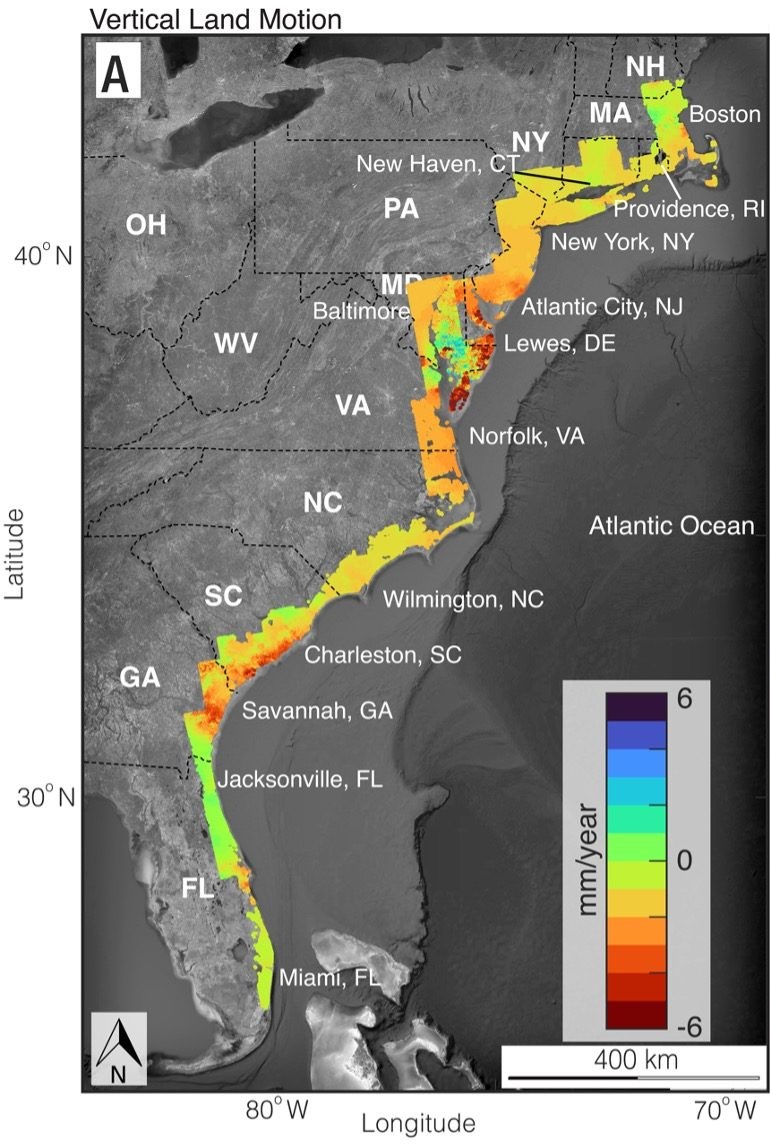
Based on satellite imagery, geologists have determined major cities on the U.S. Atlantic coast are sinking, some areas as much as 2 to 5 millimeters (.08-0.2 inches) per year. Called subsidence, this sinking of land is happening at a faster rate than was estimated just a year ago. In a new paper published in the Proceedings of the National Academies of Sciences, researchers say their analysis has far-reaching implications for community and infrastructure resilience planning, particularly for roadways, airport runways, building foundations, rail lines, and pipelines.
Continue reading “Satellite Data Shows US East Coast is Sinking”Hubble Shows That a Fast Radio Burst Came From a Giant Group of Galaxies
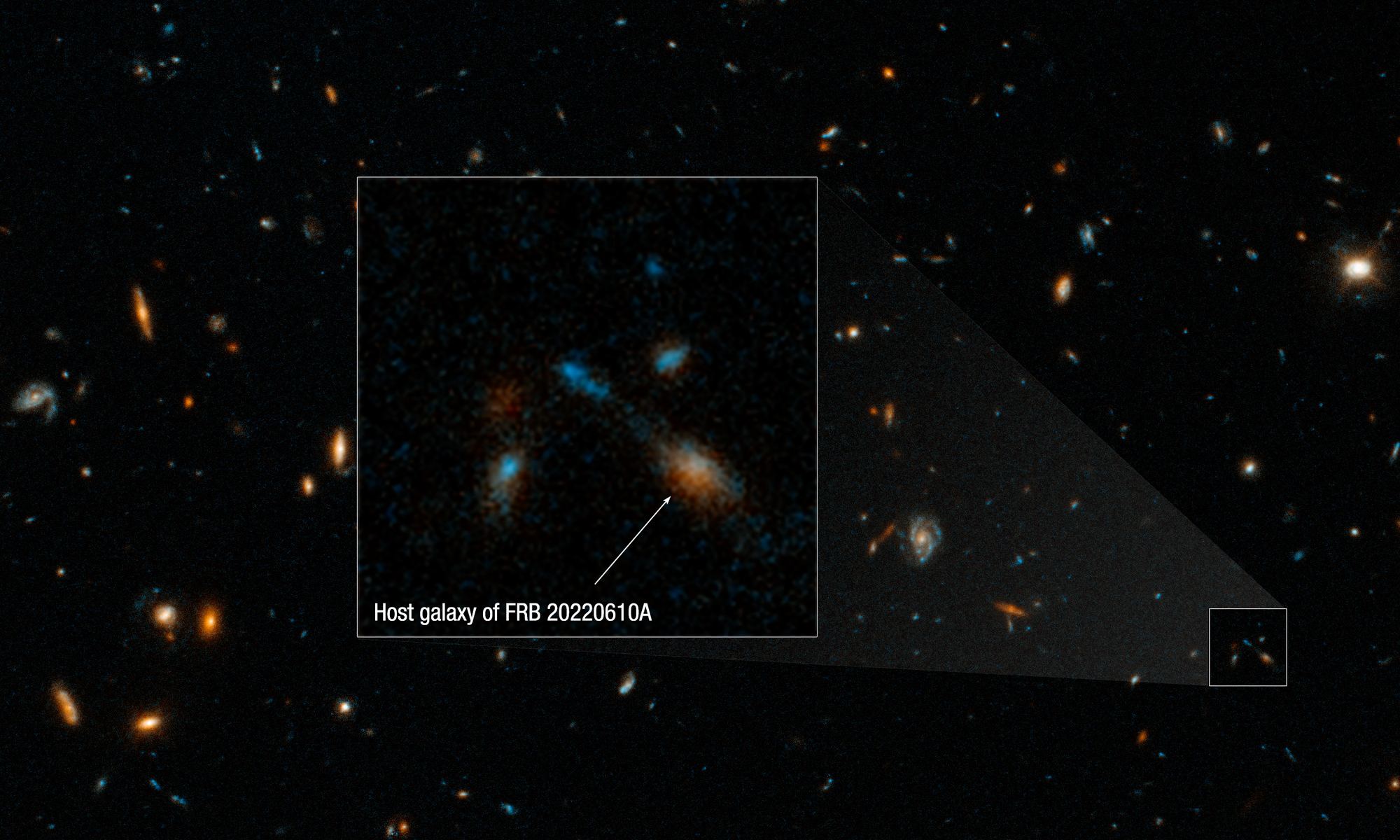
Way back when the cosmos was only five billion years old, a powerful explosion happened in a group of young galaxies halfway across the Universe. It sent out a blast of radiation from one member of that distant galaxy group.
Continue reading “Hubble Shows That a Fast Radio Burst Came From a Giant Group of Galaxies”Chinese Rocket Lofts the Einstein Probe and its “Lobster Eyes”
Any astronomical instrument dubbed “Lobster Eyes” is bound to grab attention. It’s actually unlike scientists to give anything creative names, take the big red coloured storm on Jupiter which resembles a spot…aka the Great Red Spot! Lobster Eyes is the name adtoped by the X-ray telescope that just been launched from China and will scan the sky looking for X-rays coming from high-energy transients.
Continue reading “Chinese Rocket Lofts the Einstein Probe and its “Lobster Eyes””Impact Craters: Why study them and can they help us find life elsewhere?
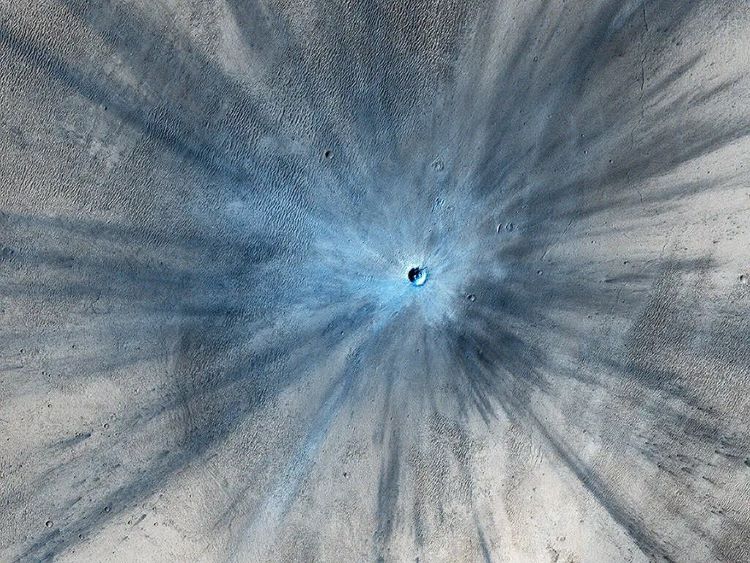
When we look at the Moon, either through a pair of binoculars, a telescope, or past footage from the Apollo missions, we see a landscape that’s riddled with what appear to be massive sinkholes. But these “sinkholes” aren’t just on the Moon, as they are evident on nearly every planetary body throughout the solar system, from planets, to other moons, to asteroids. They are called impact craters and can range in size from cities to small countries.
Continue reading “Impact Craters: Why study them and can they help us find life elsewhere?”A Giant Star is Fading Away. But First, it Had an Enormous Eruption
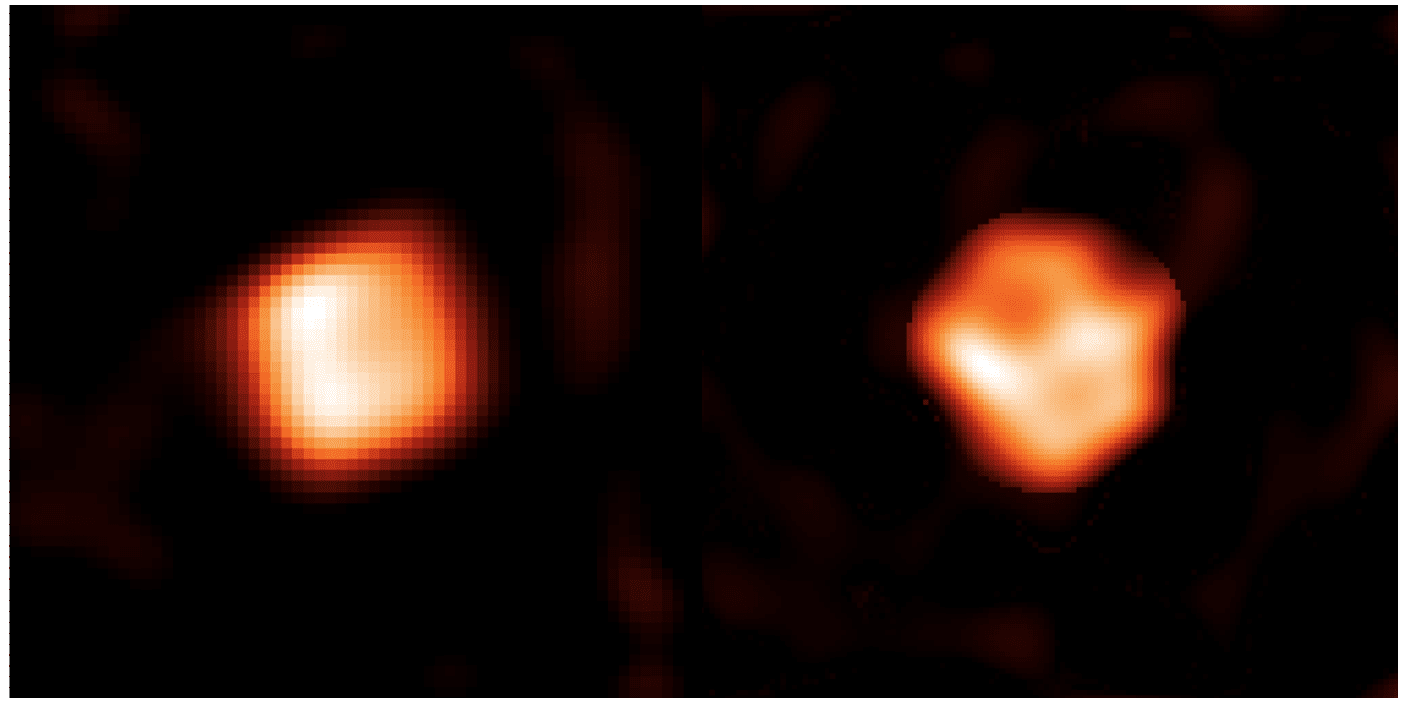
About 16,000 light-years away, a massive star experienced an unusual dimming event. This can happen in binary stars when one star passes in front of the other. It can also be due to intrinsic reasons like innate variability. But this star dimmed by as much as one-third, a huge amount.
What happened?
Continue reading “A Giant Star is Fading Away. But First, it Had an Enormous Eruption”Another Example of a Fantastic Einstein Ring
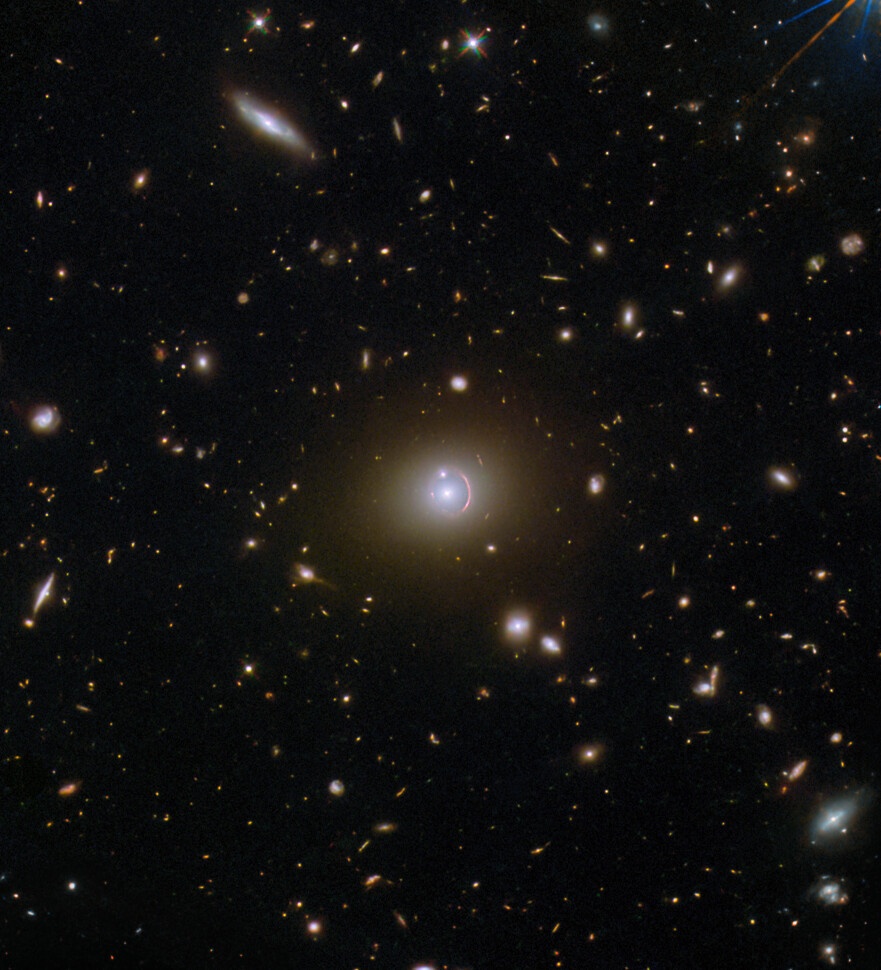
The most evocative astronomy images take us across space and time to stars and galaxies billions of light-years away. Nestled at the center of this one, taken by the Hubble Space Telescope, is a collection of three galaxies. They’re not all that close together, although they appear to be in this image. What’s fascinating about this image is that it’s a fine example of an Einstein gravitational ring—and its discovery was enabled by members of the public!
Continue reading “Another Example of a Fantastic Einstein Ring”The Youngest Planetary Disks Ever Seen

How long does planet formation take? Maybe not as long as we thought, according to new research. Observations with the Atacama Large Millimetre/submillimetre Array (ALMA) show that planet formation around young stars may begin much earlier than scientists thought.
Continue reading “The Youngest Planetary Disks Ever Seen”
